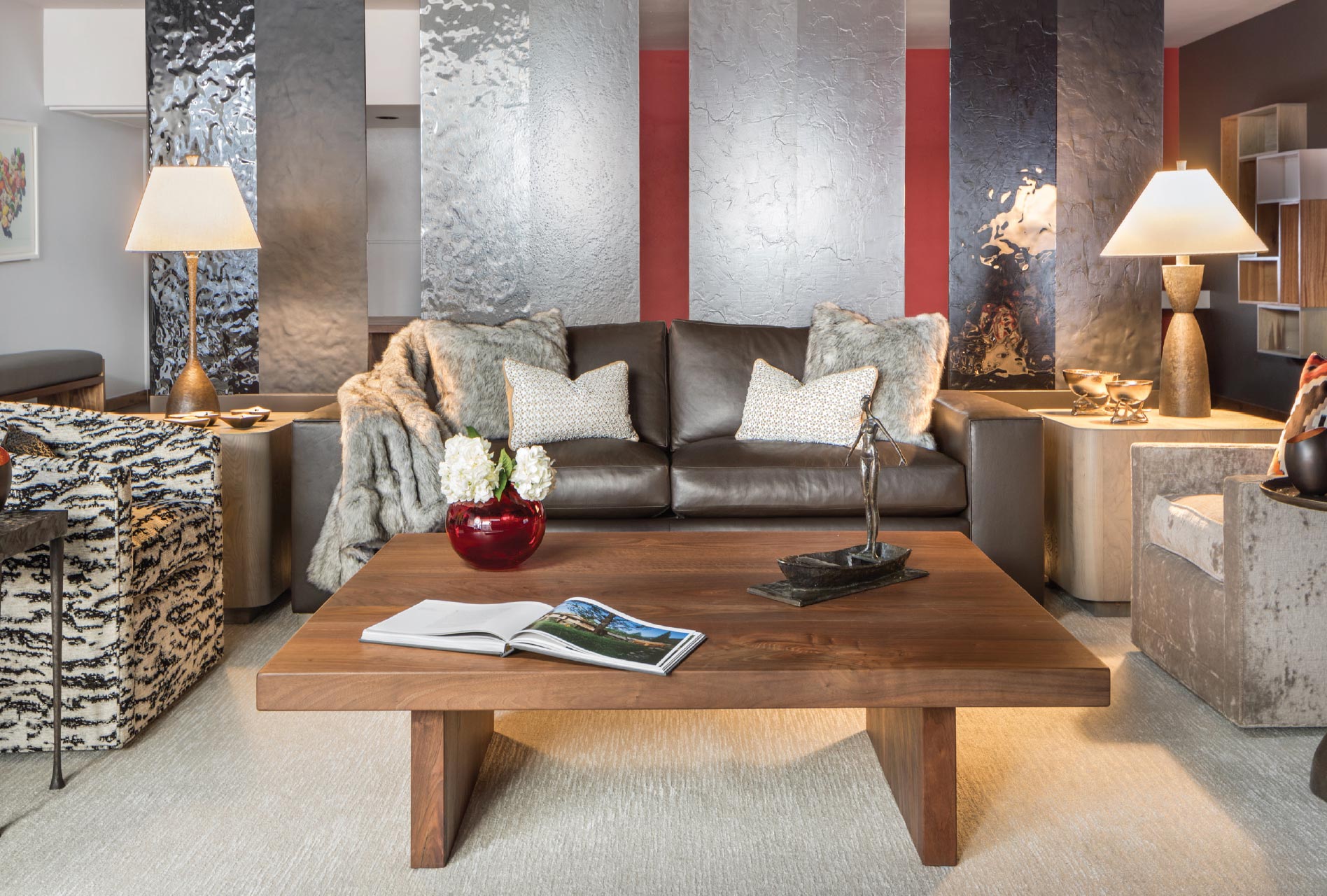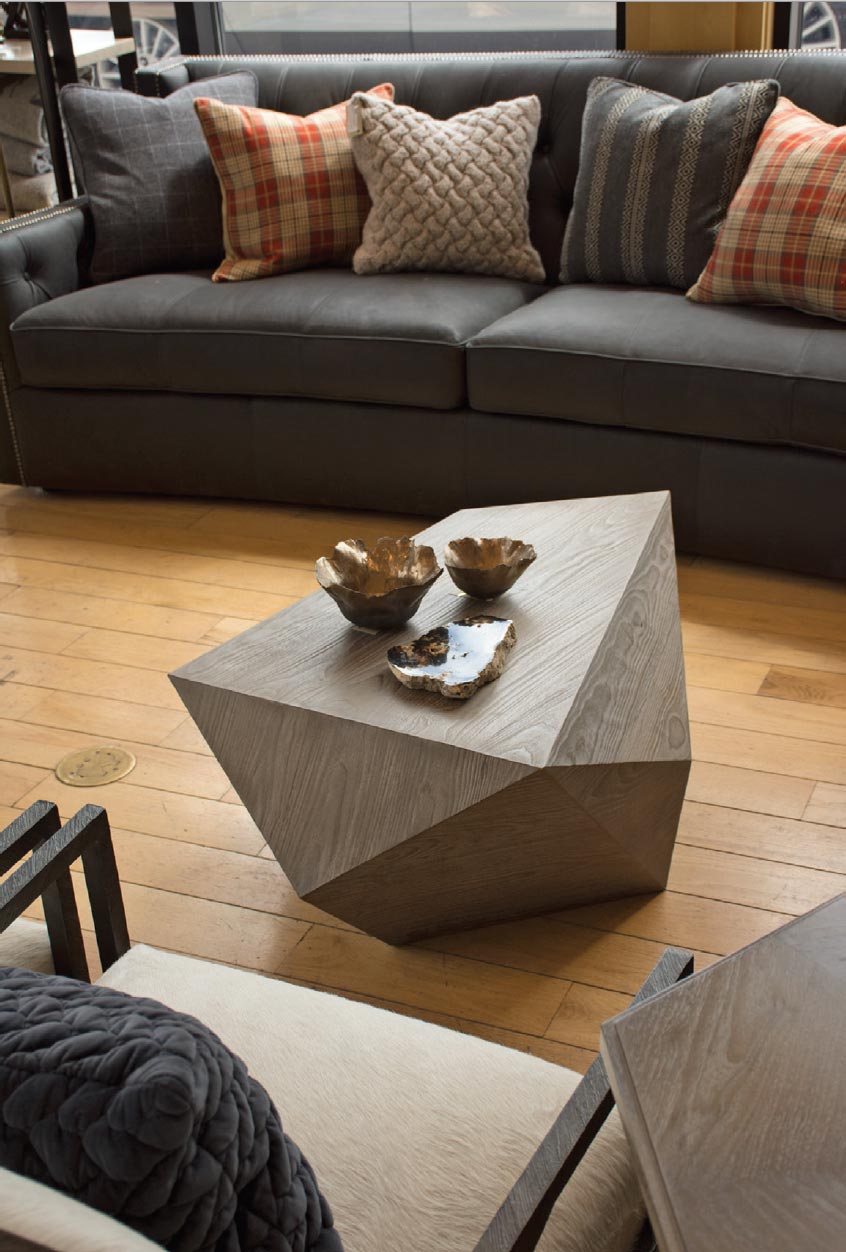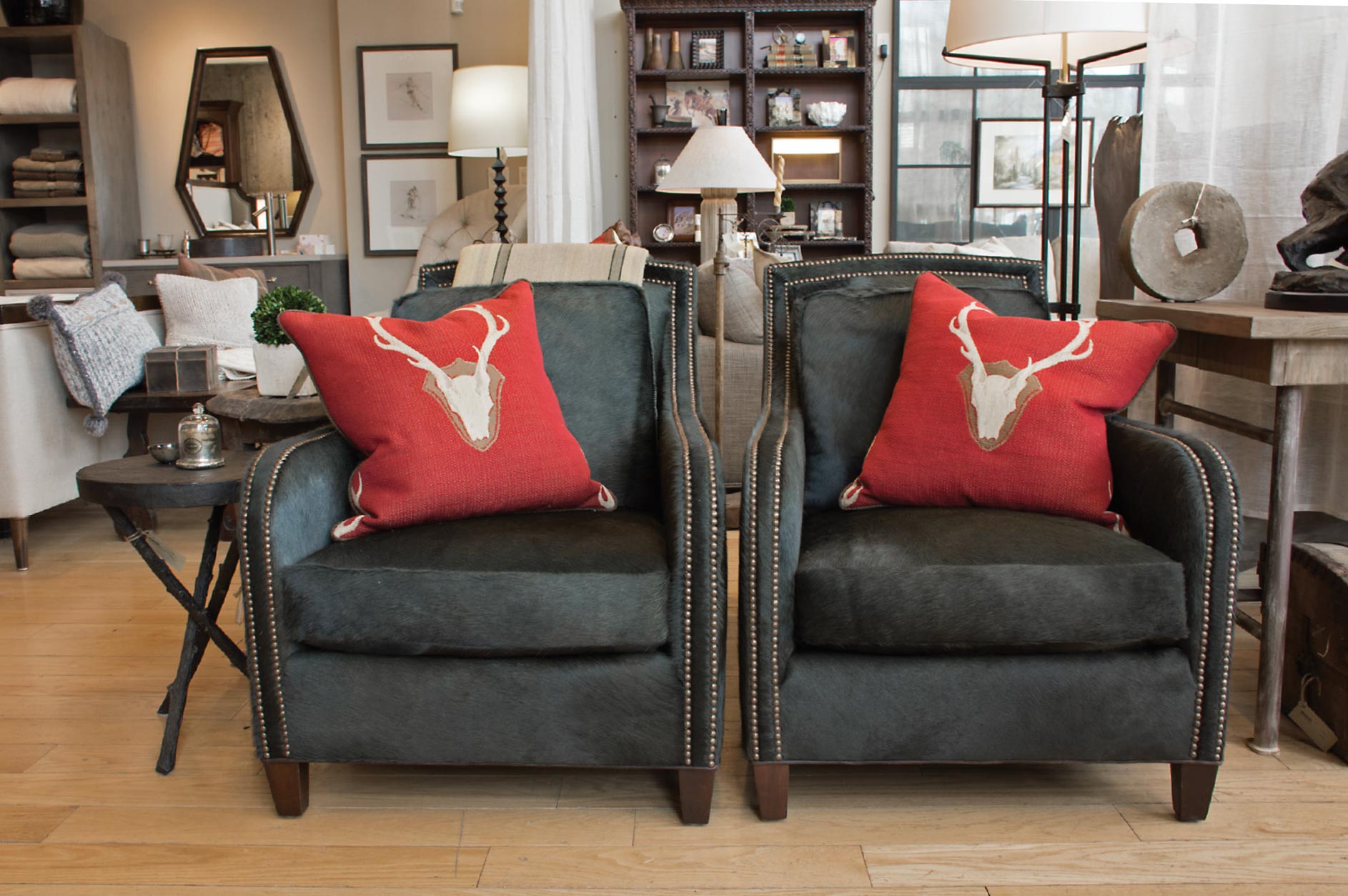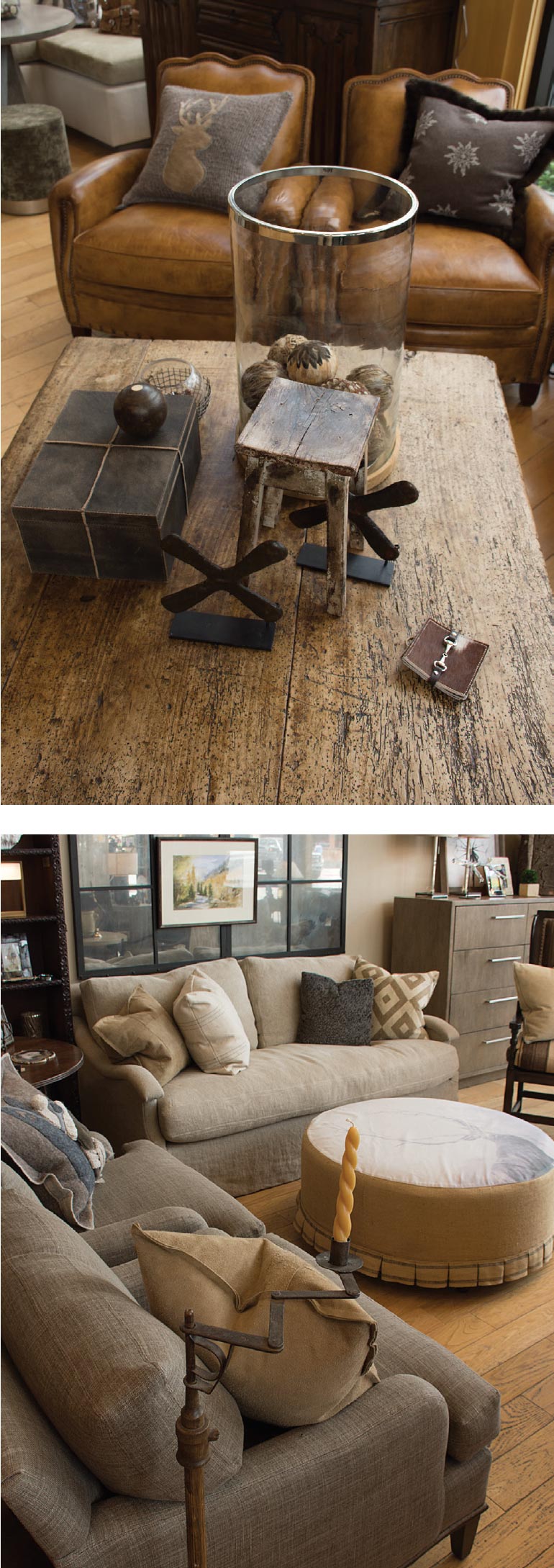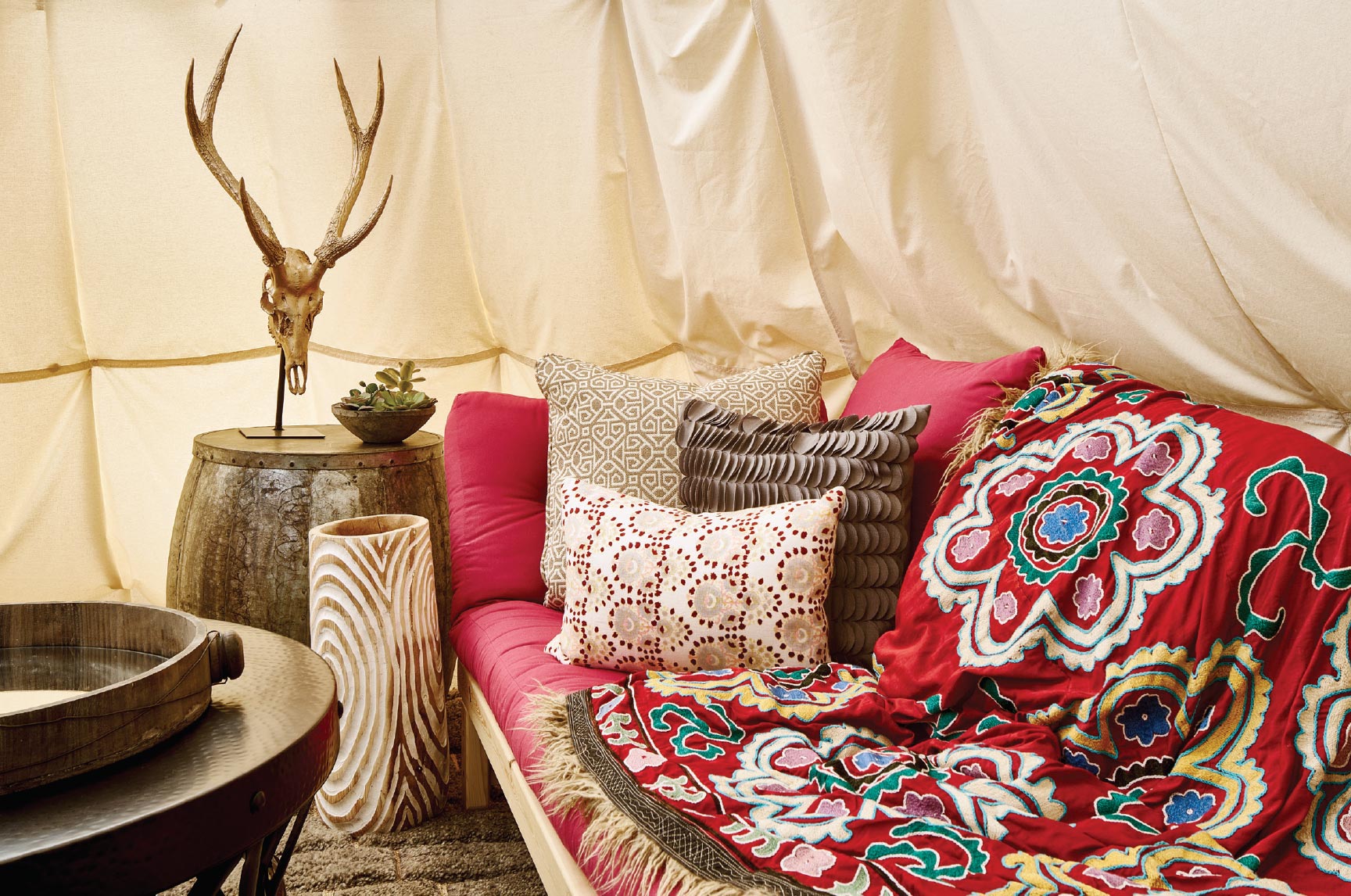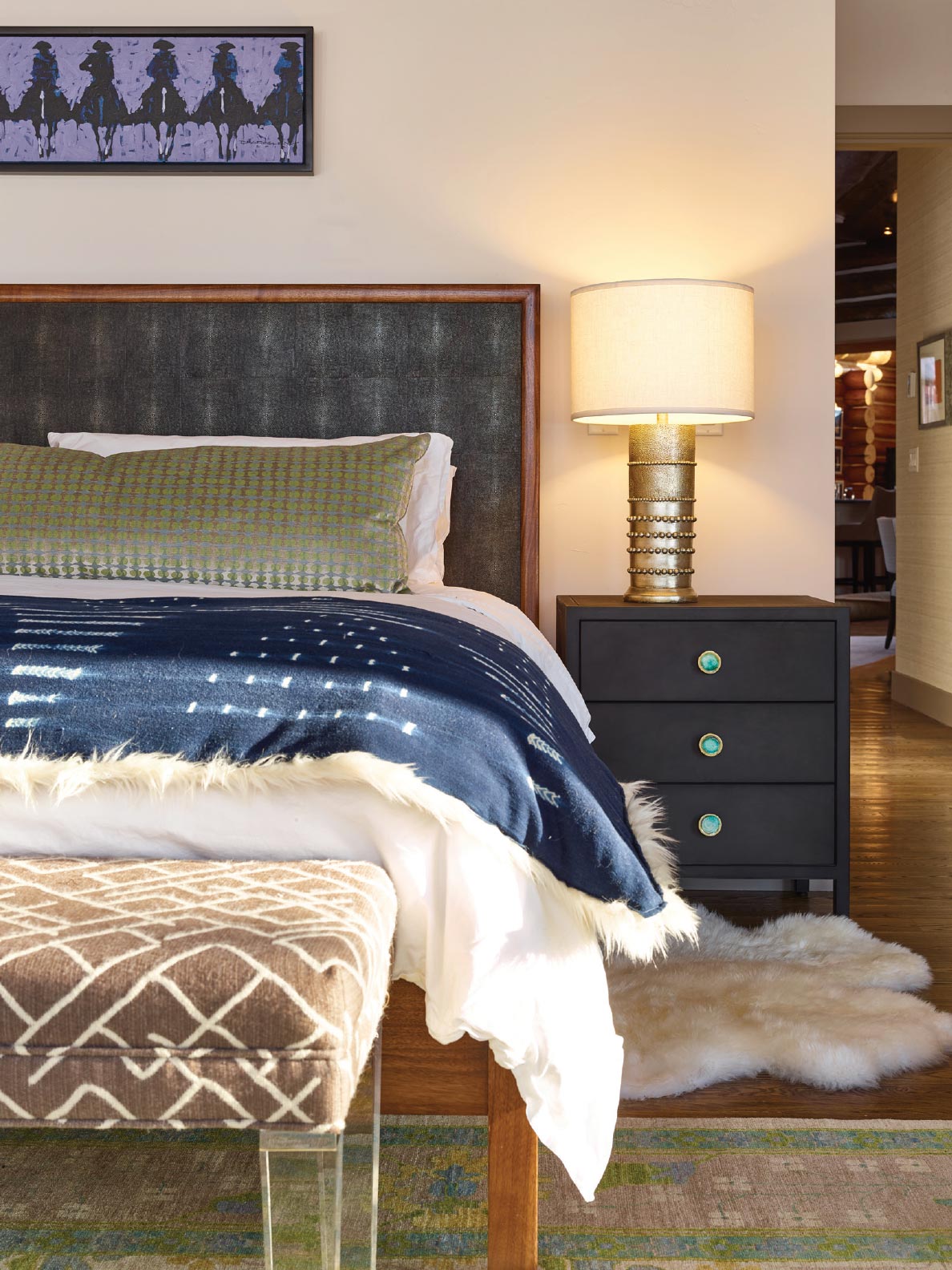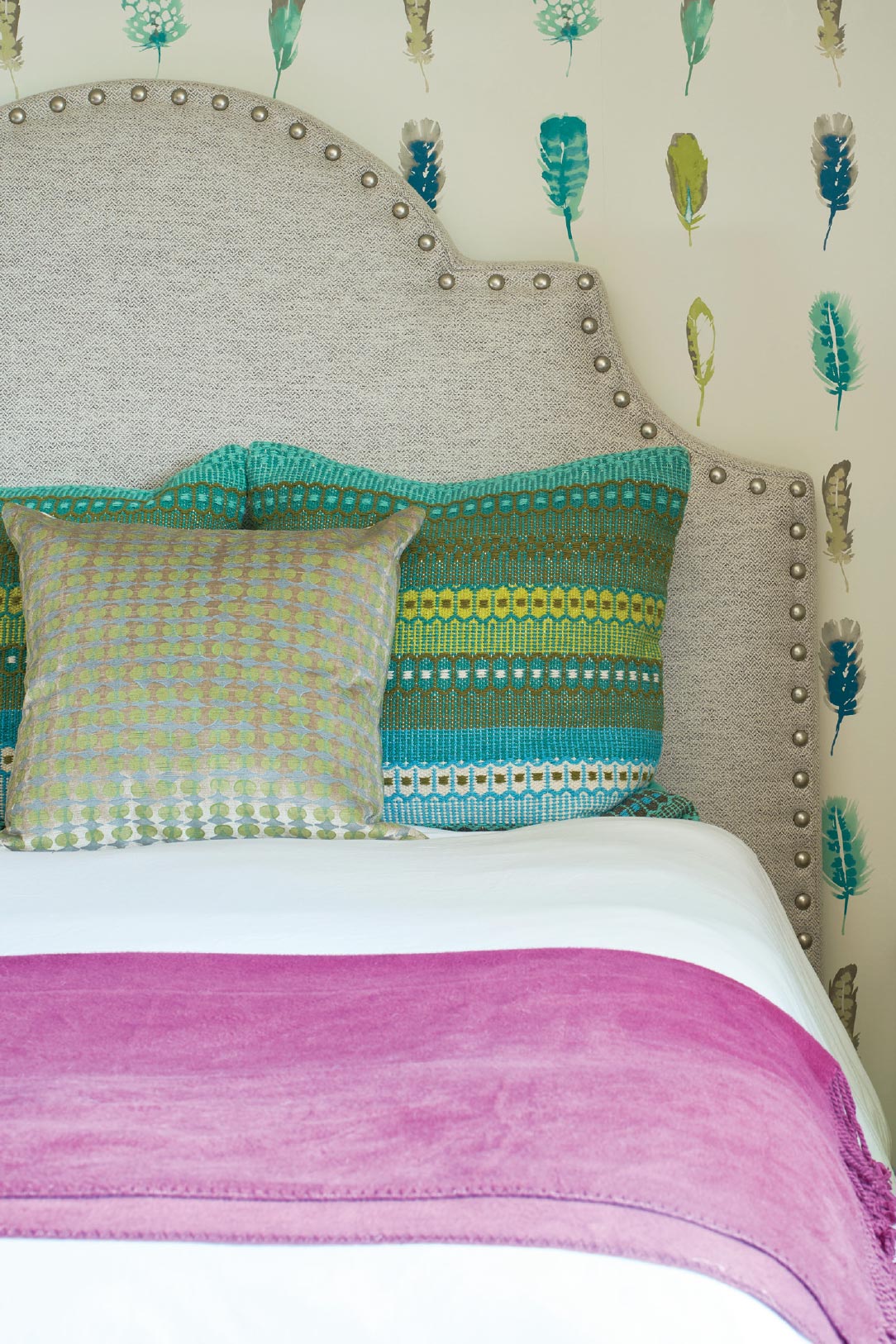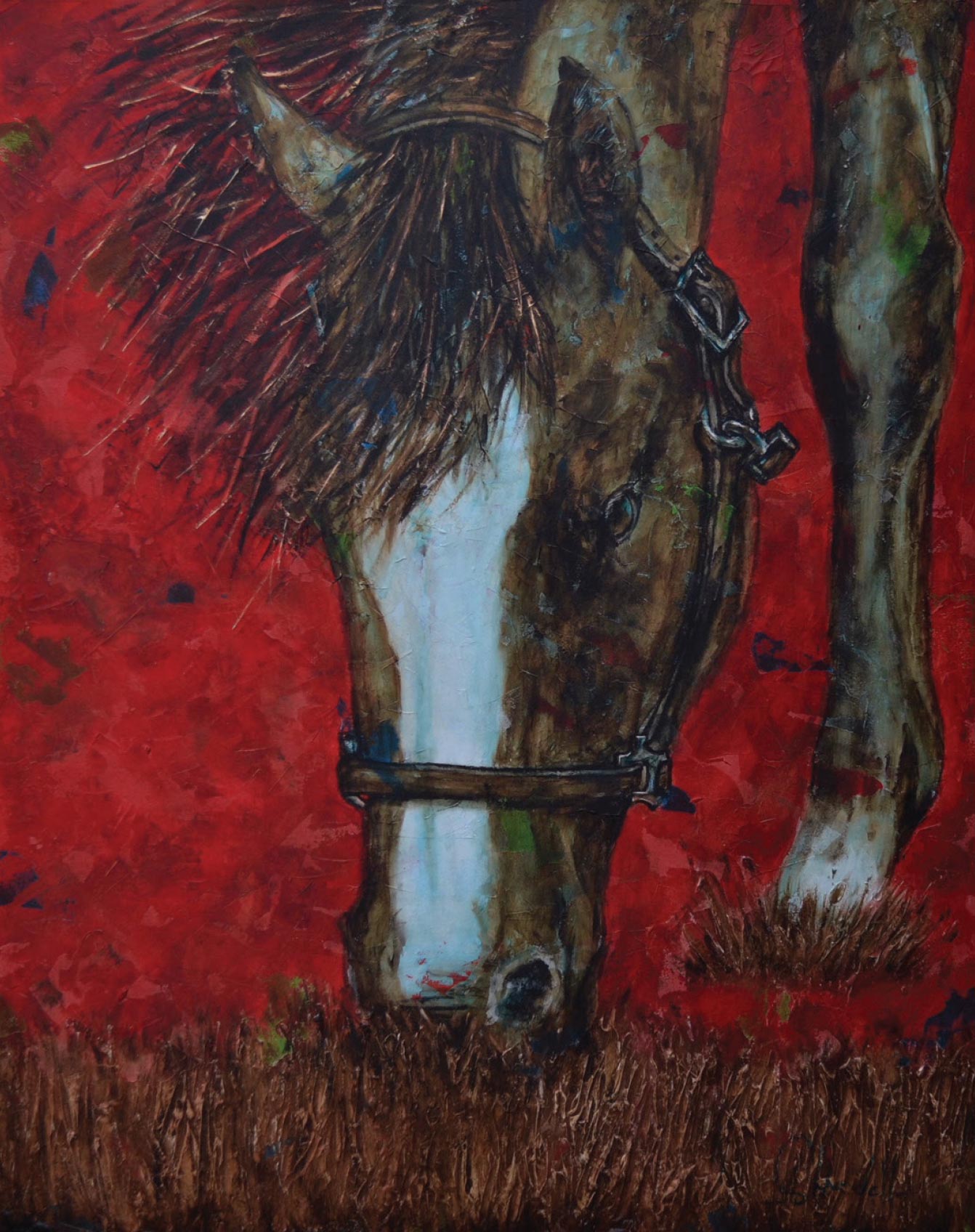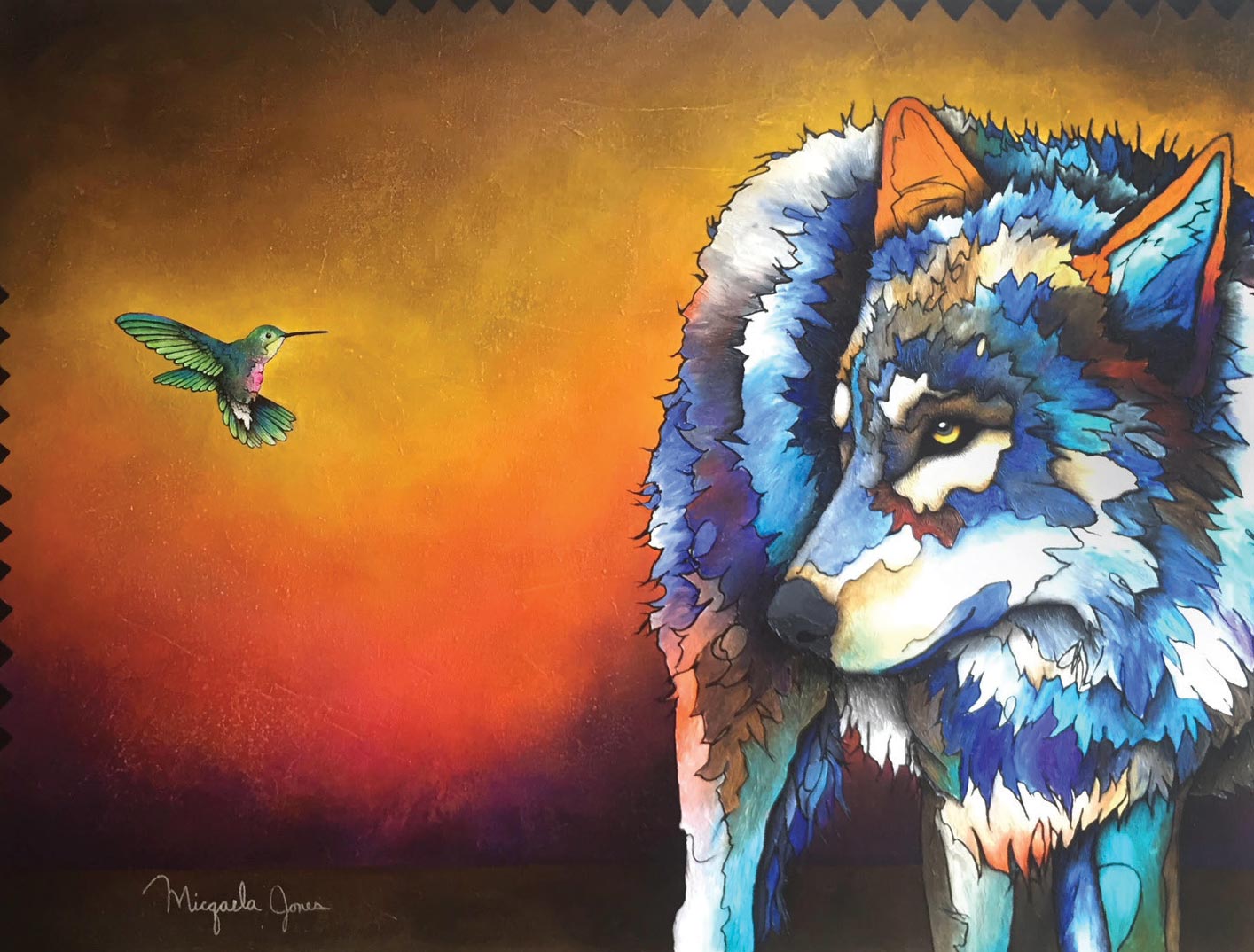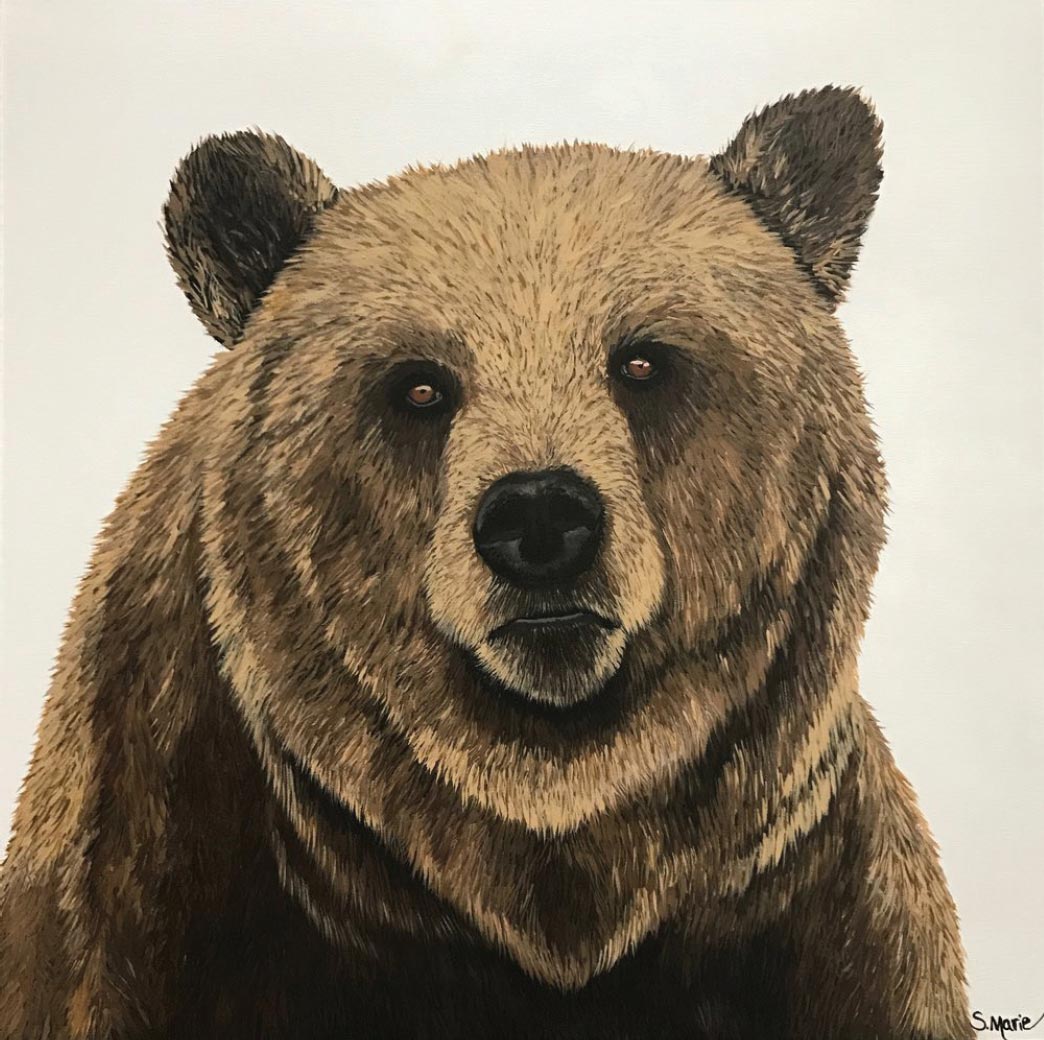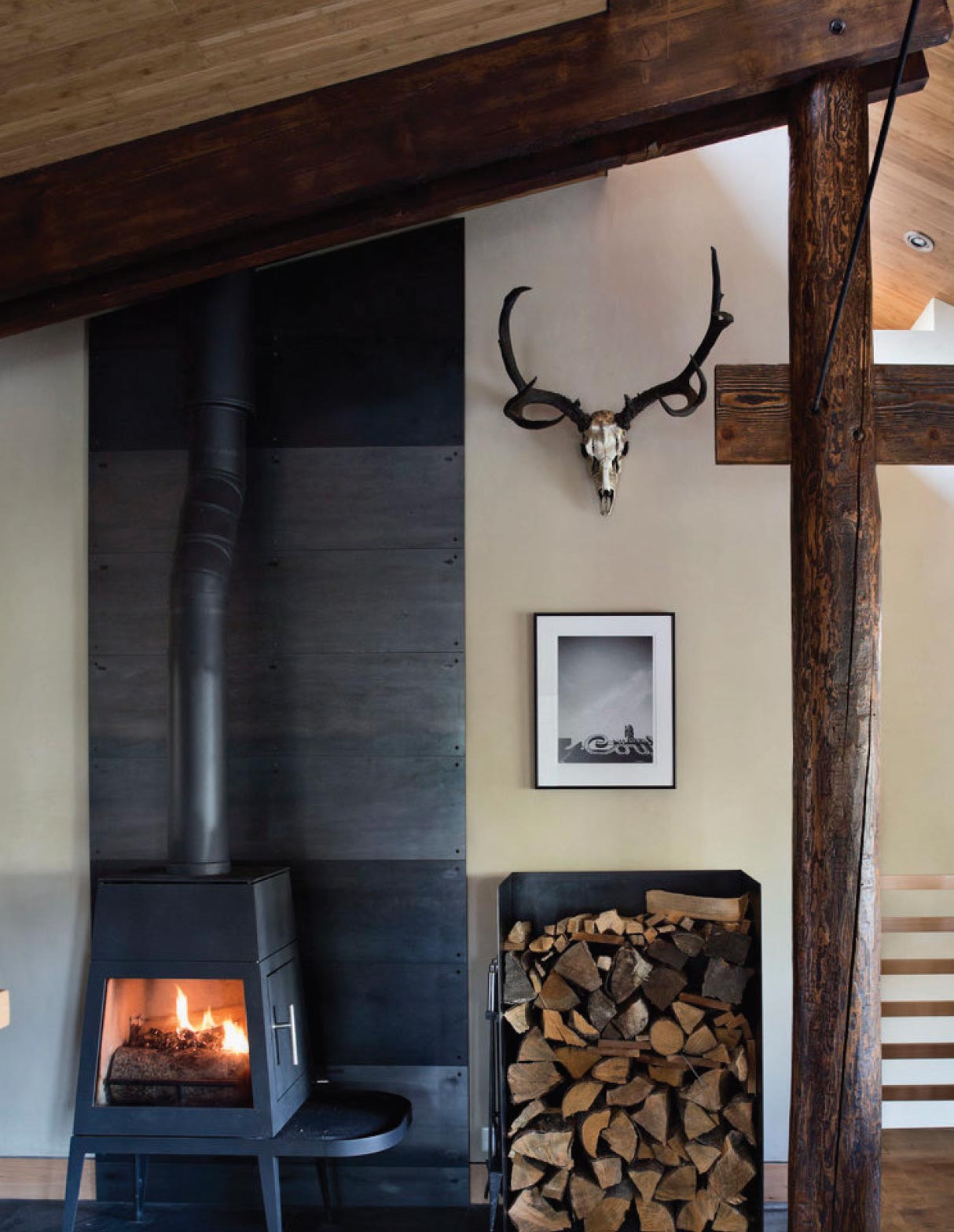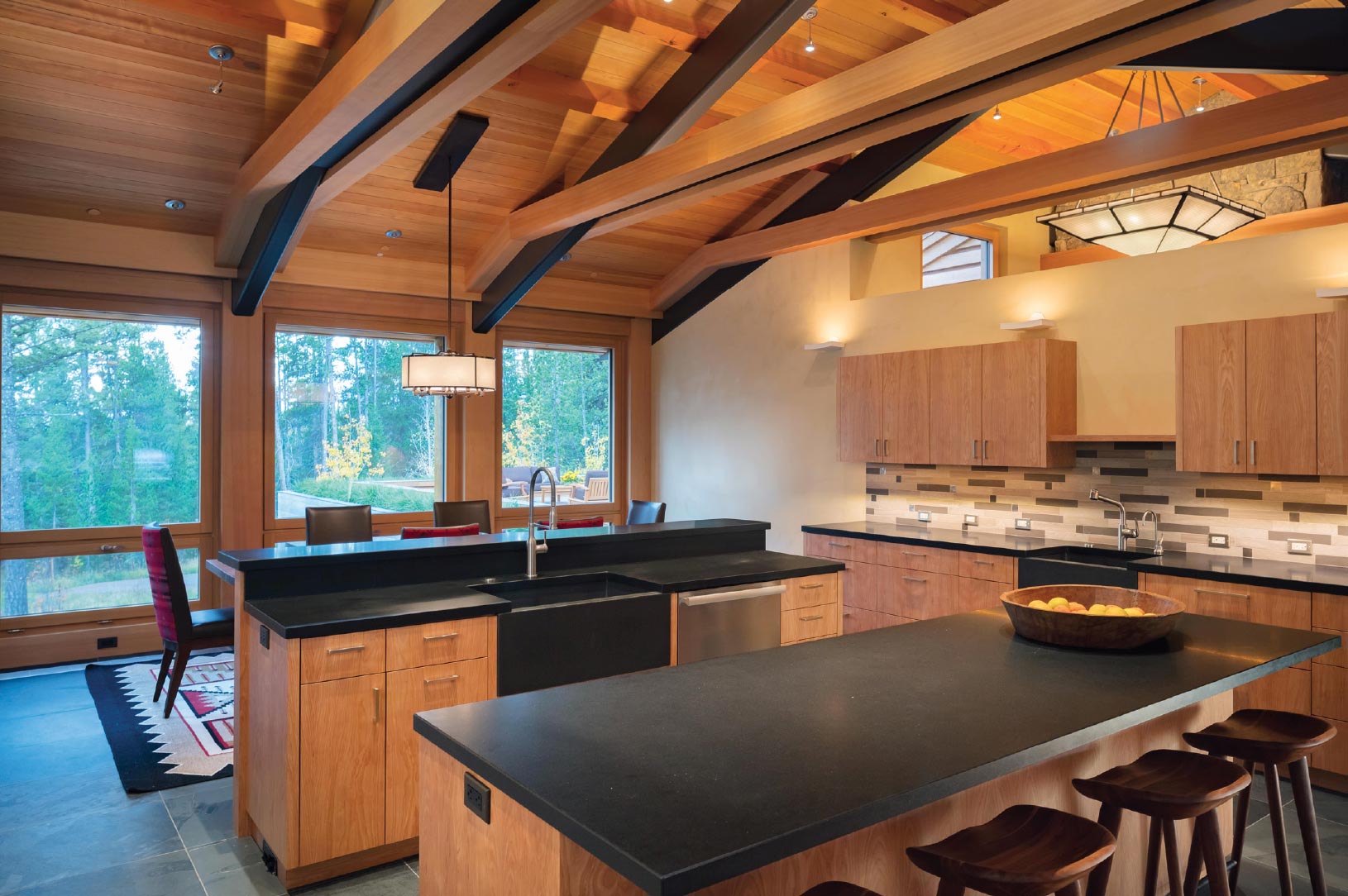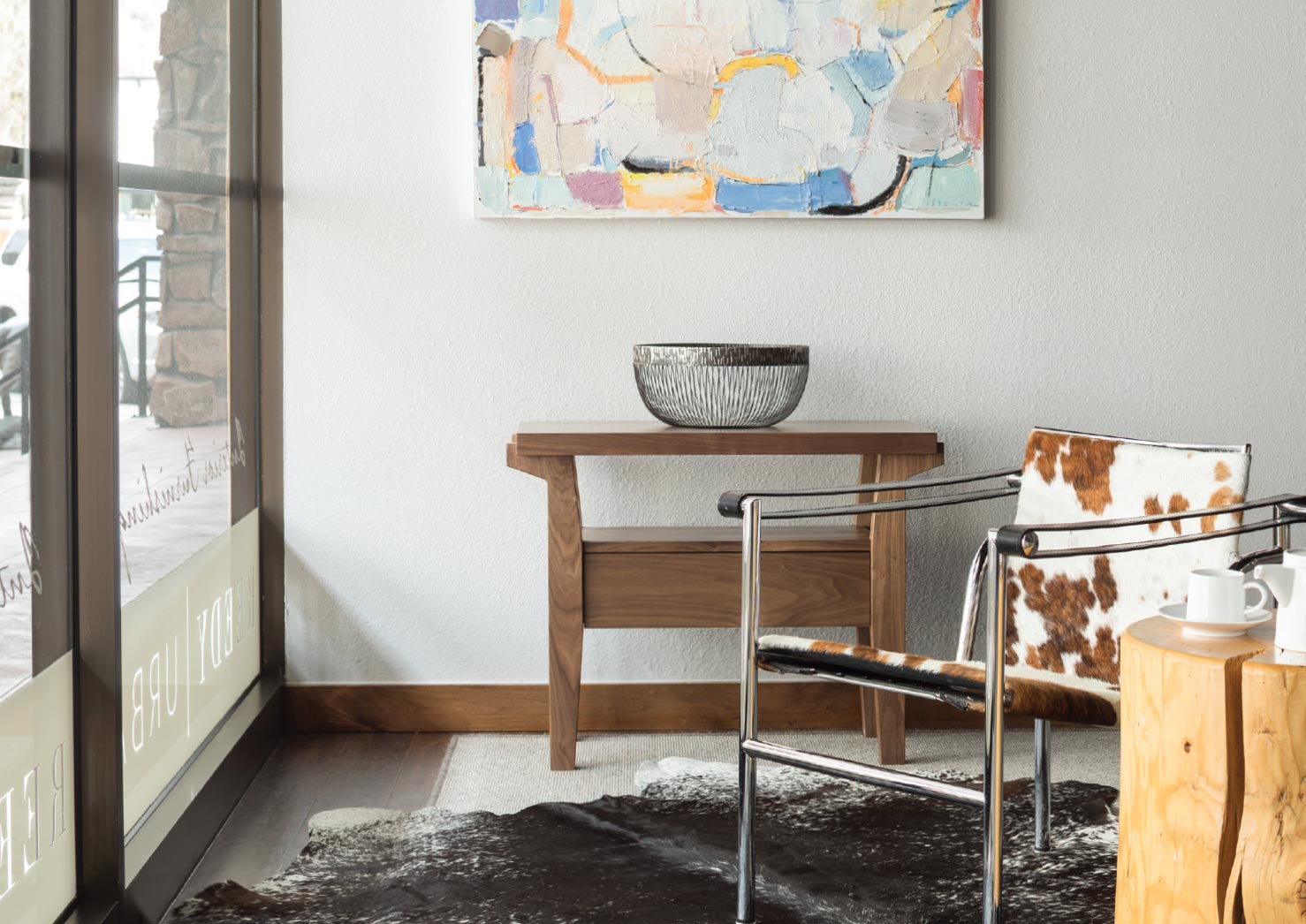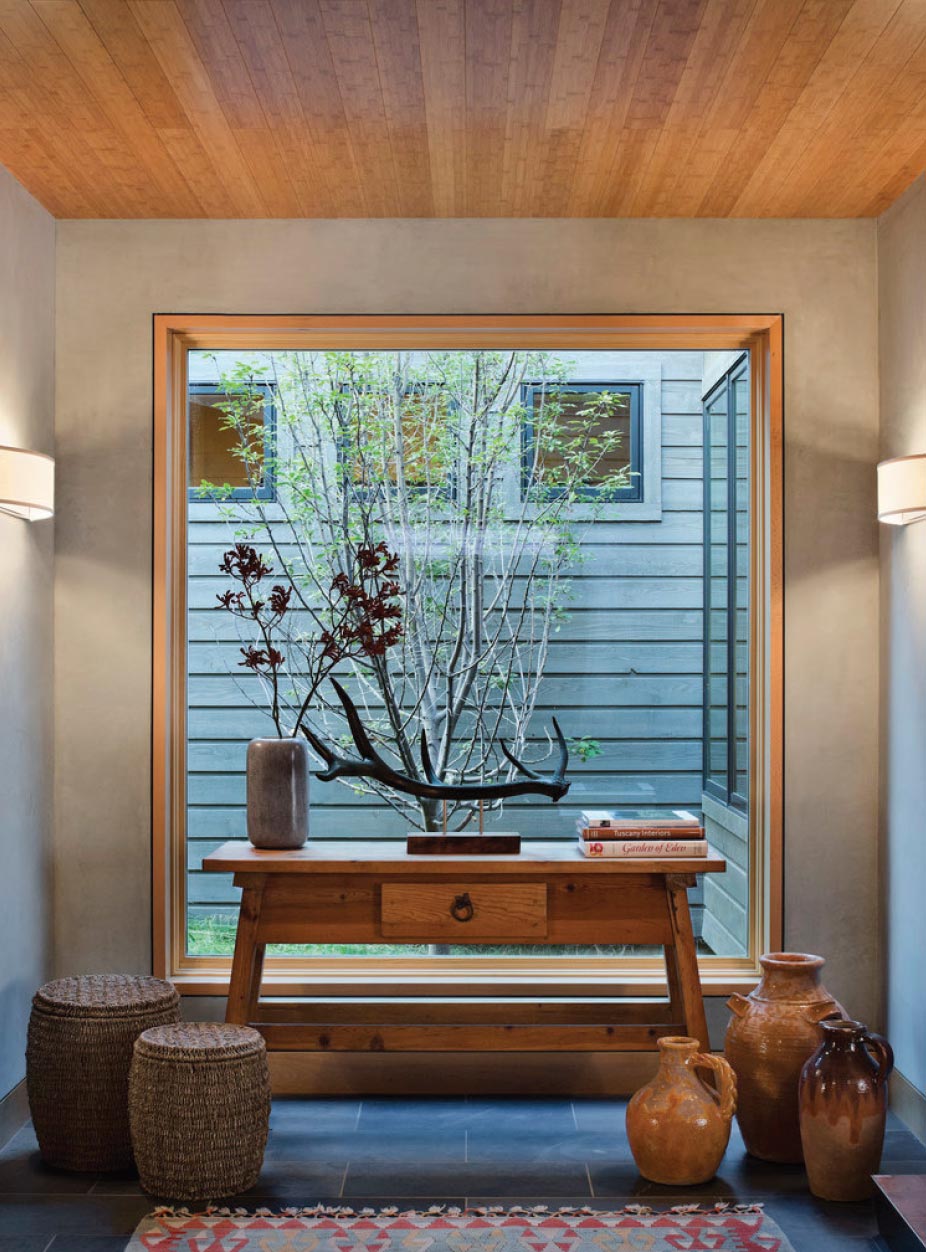If the walls are the bones of a house, and the utilities its veins, then the form and function of furniture must be the organs. Furniture makes a home livable; it makes it comfortable and useful. A more apt, and tasty, metaphor may be that of an ice cream sundae, wherein the bowl is the home, the ice cream the furniture, and paintings and accessories the cherry that makes a space truly beautiful. As the final step in the home design process, the choice of furnishings deserves the same priority as any proceeding initiatives, for which there is an entire industry of professionals trained to help.
Mixing to Find Your Match
Harker Design
Designing a home is a constant practice of innovation. In a world of changing trends and stylistic motifs, no one formula can be used to curate a mountain home that will appeal to every single homeowner. Paula Call, interior designer at Harker Design, knows just as much. She works with clients to create spaces to fit the individual, practical, and aesthetic needs of every mountain lifestyle.
“Every project we do stretches our imaginations to find something a little different, something a little new,” says Call. “That’s why interior design is exciting; you get to research and experiment and find something perfect for each individual.” Call’s work includes designing homes from the bottom up, and she carefully selects furnishings and details with the goal of making every client feel at home.
Sometimes, curating an individual space might include mixing different styles and trends. The mountain landscape is home to a constant conversation between modern, traditional, and contemporary styles—any given home might have wood panels, steel trusses, or log accents. Harker Design has made an art of finding just the right details in each style to create an aesthetic that feels welcoming and cohesive.
“Every project we do stretches our imaginations to find something a little different, something a little new. That’s why interior design is exciting.”
–Paula Call, Harker Design
“There’s a trick to knowing how much traditional you can put in and how much transitional to add to make a home feel current,” explains Call. “To mix two or three styles takes a good eye and sense of balance. For example, you want to keep clean lines of the transitional while mixing in a few rustic details to accomplish the mountain modern look that everyone is seeking right now.”
When filling a space with furnishings, Call always starts with the same two questions: intention and function. That is, how is the space intended to be used, and which pieces will best function to fulfill that vision? The Harker team considers size and scale of a home, and will attend to each detail, big and small, to fit the needs of the space.
Call uses the example of furnishing an entryway to show the thought they put into even the smallest spaces. Being the first and last impression of the home, the entryway must both function as a welcoming, beautiful space while also catering to the needs of guests, who may be coming inside covered in mud, water, or snow. Depending on the size of the entry, Call might select a table and painting to welcome guests, or a bench for sitting and taking off shoes.
“Every home is so specific to itself that it will tell you what it needs,” says Call, who emphasizes that homes and homeowners will never be one-size-fits-all. “You just have to open your eyes to look, and the spaces come alive.”
“Every home is so specific to itself that it will tell you what it needs. You just have to open your eyes to look, and the spaces come alive.”
–Paula Call, Harker Design
Perhaps the most formative element in Call’s work is her love for the people she gets to meet through it. Oftentimes, problem-solving to complete a space involves getting to know the client beyond the surface. “I love this job,” says Call. “The people I meet here have become so close to me; we’ve earned lasting relationships with our coworkers and clients. I learn something new every day.”
As Harker Design demonstrates, learning, innovation, and problem-solving are all intertwined. Whether clients seek furnishings or entire home design, they can expect nothing less than a perfect mix of the three.
Playing with Pop
Dwelling
When Kate Binger first arrived in the Tetons, she did not know that she would stay for good. Formerly based in Los Angeles, the Dwelling founder came to Jackson Hole on assignment. “I knew L.A. wasn’t my cup of tea,” she says. “I immediately fell in love with Jackson and decided to make the move.” Upon her return to California, she turned in her six-month notice and began her plans to move to the mountains and pursue residential design.
Since then, Binger has made a name for herself with her playful design sense and innovative creativity. As anyone can see by her portfolio, Binger brings energy to a host of mountain aesthetics and styles. She speaks emphatically about her commitment to finding pieces her clients will love to live with, while also helping them have fun with their design.
“I knew L.A. wasn’t my cup of tea; I immediately fell in love with Jackson.”
–Kate Binger, Dwelling
“I try to encourage my clients to see that even if it’s just a pillow, having a light pop of color and texture can be an incredible way to make a room more dynamic,” Binger says. She describes her favorite design work as “eclectic with a bohemian influence,” which brings a current flair to the timelessness of Jackson’s mountain design landscape.
Binger loves transitional spaces with flowing natural light, and makes a game of finding underused nooks and crannies in a house and making them come alive. “I love nooks where I can see people reading, working on their laptops, or enjoying coffee in the morning,” she says. “I’m partial to those spaces because I have two in my own home and I use them all the time.”
For example, Binger recently finished a project where she redid a reading nook in a child’s bedroom. She took the space and added butterfly wallpaper, a detailed shade, and a handful of different prints and textures on the fabrics and pillows. Using natural light and the shape of the nook, she melded these different colors and designs into one comprehensive, welcoming aesthetic. The end result? The perfect spot for an afternoon read, or an evening doing homework.
“I try to encourage my clients to see that even if it’s just a pillow, having a light pop of color and texture can be an incredible way to make a room more dynamic.”
–Kate Binger, Dwelling
When Binger furnishes a home, she seeks to make use of every space and insert energy into each design. Bringing in textiles with gorgeous colors and incredible texture, she encourages people to use furnishings to make bold choices with little details. While not everyone is willing to make the leap to using an orange chair as the focal point of one’s living room (although if you are, Dwelling should be your first stop), staying open to inserting fun details can completely energize a room from the inside out.
When designing large spaces, it’s no surprise that Binger gravitates towards the playful. “I love playing games, so anytime I get to design a great room, living room, or den, I like to focus on that space being a gathering area for conversation and fun,” she says. “In that case, the coffee table becomes the center point, because it is so versatile and inclusive.”
Versatility is the name of the game in design, and Dwelling clearly has a taste for several types of mountain chic. “I’m always going to encourage my clients to push the envelope stylistically,” says Binger. “But I don’t live in their homes, so I design what they want and what they need. I satisfy their needs and their aesthetic and then use my creativity to help people be even more comfortable in their homes.”
Curating Your Space
The Grand Fine Art
Selecting fixtures and furnishings for a space is certainly an art, but one element not to be overlooked in the process is artwork itself. Mary Beth Warren, owner of The Grand Fine Art on West Broadway, has found a niche connecting clients with the finest contemporary natural art in the mountains. As an art history and business major, The Grand Fine Art gave Warren the opportunity to pursue her passion later in life, which she does with the energy and intent of any fine artist.
Hailing from Florida, Warren saw a gap in the Jackson Hole market to provide artwork outside of the traditional cowboy motif that is so familiar to the Intermountain West. She wanted to curate work that spoke to the beauty and boldness of the rugged landscape with a more colorful and contemporary feel than established western art.
“Art is a personal statement of who you are and what represents your soul.”
–Mary Beth Warren, The Grand Fine Art
“Art is a personal statement of who you are and what represents your soul,” says Warren. “Not everyone comes from the West. Over time, I started moving toward a more contemporary palette with playful tones, vivid colors, bright accents, and a sense of movement.” Any visitor to The Grand Fine Art will see work that depicts nature through bold colors, strong strokes, delicate details, and popping perspective.
Warren has selected a core group of artists including Deb Fox, Shannon Marie Schacht, Shawndell Oliver, and Joe Kitzmiller, whose work converses with the mountain landscape in altogether innovative ways. For example, Oliver incorporates natural fibers into each of her paintings, coating horse or wolf hair in big, bold color before using oil to seal them in. On the back of each piece, you can find an inscription of where the fibers came from, a personal signature of Oliver’s.
“When picking art for a home, it’s best for homeowners to find pieces that truly reach them,” says Warren, who, along with her assistant, can work with designers to fit pieces into certain style themes and color schemes. “If you are going to look at this art every day, it has to speak to you.”
Just like an artist converses with nature through painting, the piece must converse with the space in which it lives. Most of the pieces in Warren’s gallery are statement pieces, painted large and bold and meant to be the focal point of a room. Generally painted in oil or acrylic, they add a dimension of texture and color that has the power to energize any space.
“I love artists who paint movement,” says Warren, referring to work by Kitzmiller. In his pieces, a viewer can almost feel a horse leaning forward to trot, or hear the patting of oncoming bison. “I have a lot of work that exhibits animals with a contemporary feel. I find work that has energy and really pops, uses bright colors, but is rooted in nature.”
“When picking art for a home, it’s best for homeowners to find pieces that truly reach them. If you are going to look at this art every day, it has to
speak to you.”
–Mary Beth Warren, The Grand Fine Art
In line with her sentiment about truly loving the work that appears in one’s home, Warren can coordinate with clients and designers to test out a piece in their space. The Grand’s collections are incredibly well painted, with great dimension and texture. Warren is proud of the artists she has gathered. She feels confident that filling each room with art that speaks to the client is what truly brings a home to life.
Artwork is the final step in furnishing a space. Once the carpet is laid, and the furniture is organized, the artwork is the last step to pull all of the design elements together. However, as evidenced by the journeys Warren describes as she interacts with art, in many ways, artwork might be just the beginning of an evolving relationship between you and your home.
Both Timeless and Current
ekReedy Interiors
Design is intuitive. It requires a keen and quick insight to connect composition, scale, texture, and color. Kathy Reedy of ekReedy Interiors applies these elements to all of their interior spaces. Reedy, whose expertise was curated while working at Gensler in New York City, believes that design should be timeless, not a passing trend. Reedy and her design team aim to instill each of these attributes to their projects. “It is wonderful returning to a project you completed years earlier and see that the work is still solid,” she says.
As they prepare to launch their new furniture line, ekReedy emphasizes these values and all elements of timeless design. They create their classic pieces from real materials like stone, wood, and glass. These materials offer simplicity and elegance and Reedy curates them throughout their interior spaces. She introduces flow and function using simple applications to achieve beautiful, functional interiors.
“All design elements are valued. I remember sitting with LaurAnce Rockefeller enjoying tea and sunflower seeds and discussing the simple elegance of a lampshade.”
–Kathy Reedy, ekReedy Interiors
“All design elements are valued,” adds Reedy. She recalls a conversation she once had with a particularly respected figure: “I remember sitting with Laurance Rockefeller enjoying tea and sunflower seeds and discussing the simple elegance of a lampshade. I thought it was so poetic that a man of his stature saw such value in the small details.” Clearly, when furnishing a home, the best approach is simple and derivative, one that seeks to create an original yet timeless style.
Originality will come from the needs of the client, and timelessness from the expertise of the designer. Reedy is emphatic that design is intuitive rather than formulaic. Although she has several go-tos (natural materials and durable design), no one client will encounter the same process of design. “The materials will be reflective of the client, the budget, and the environment of the home,” says Reedy. “Each room has its relevance and importance. We want our designs to flow between spaces to reflect the homeowner’s lifestyle and needs.”
And when looking for energy, ekReedy could not be located in a better place for inspiration. “The Tetons provide perspective,” says Reedy. “No matter what we design, Mother Nature will trump our best efforts.” Perhaps that’s why Reedy seeks natural materials in furniture design—no other material can stand up to the timelessness and power of nature. Reedy pulls her energy from playing in the mountains and combines it with her inspiration coming from the markets in Milan, Florence, and Spain to instill a human creativity in their interiors.
Therein lies the timelessness of Reedy’s craft. And with the energy of the surrounding mountains, the designs they inspire could not be anything but current.
